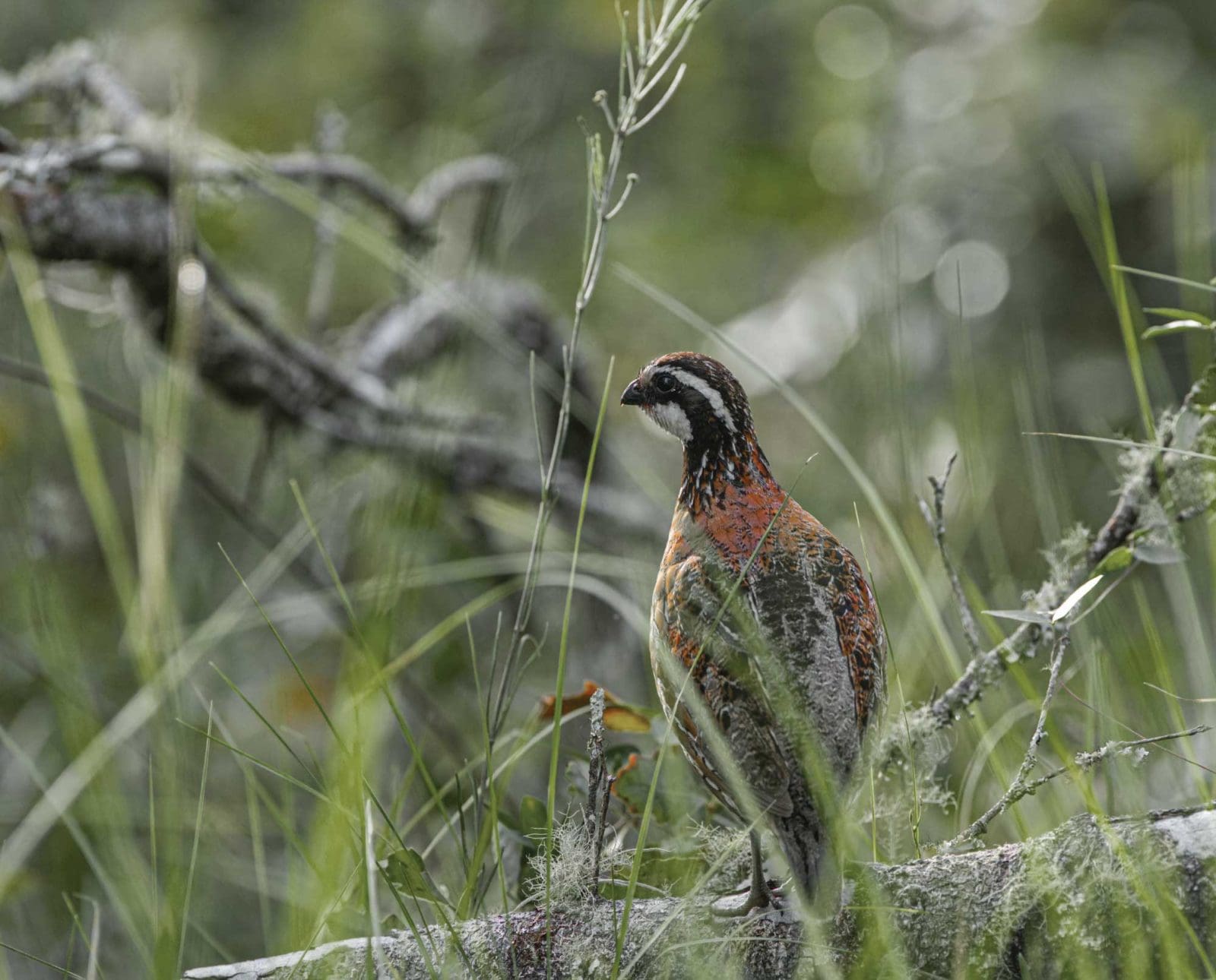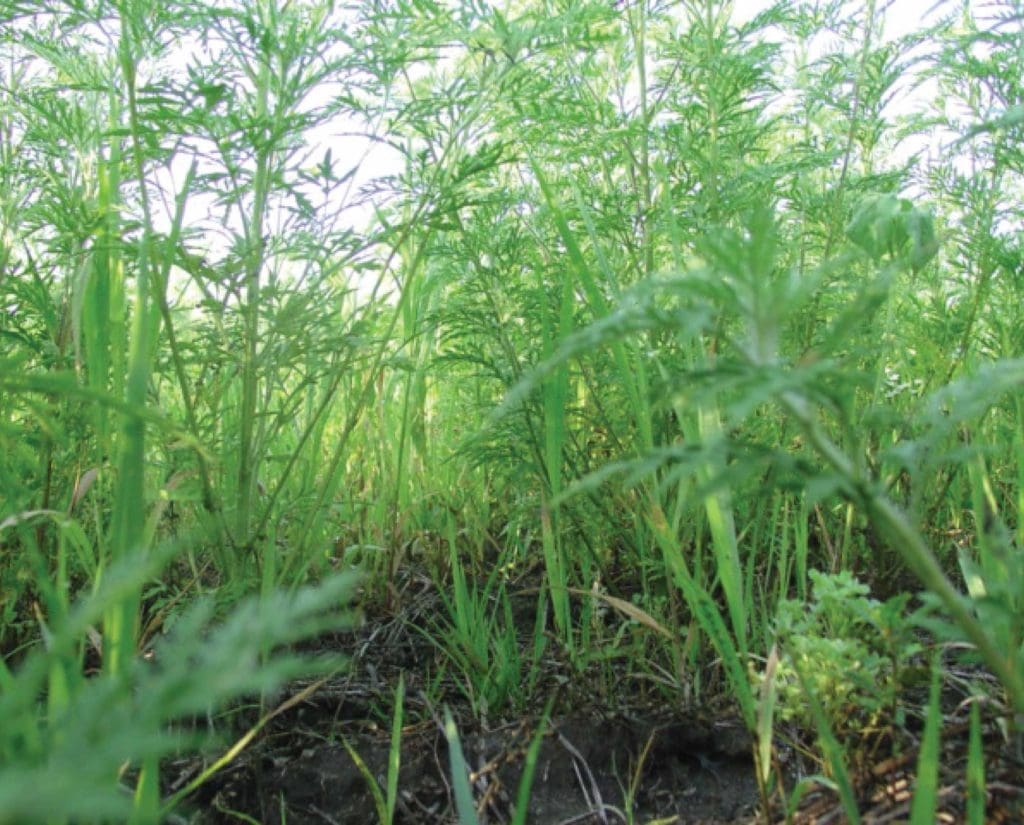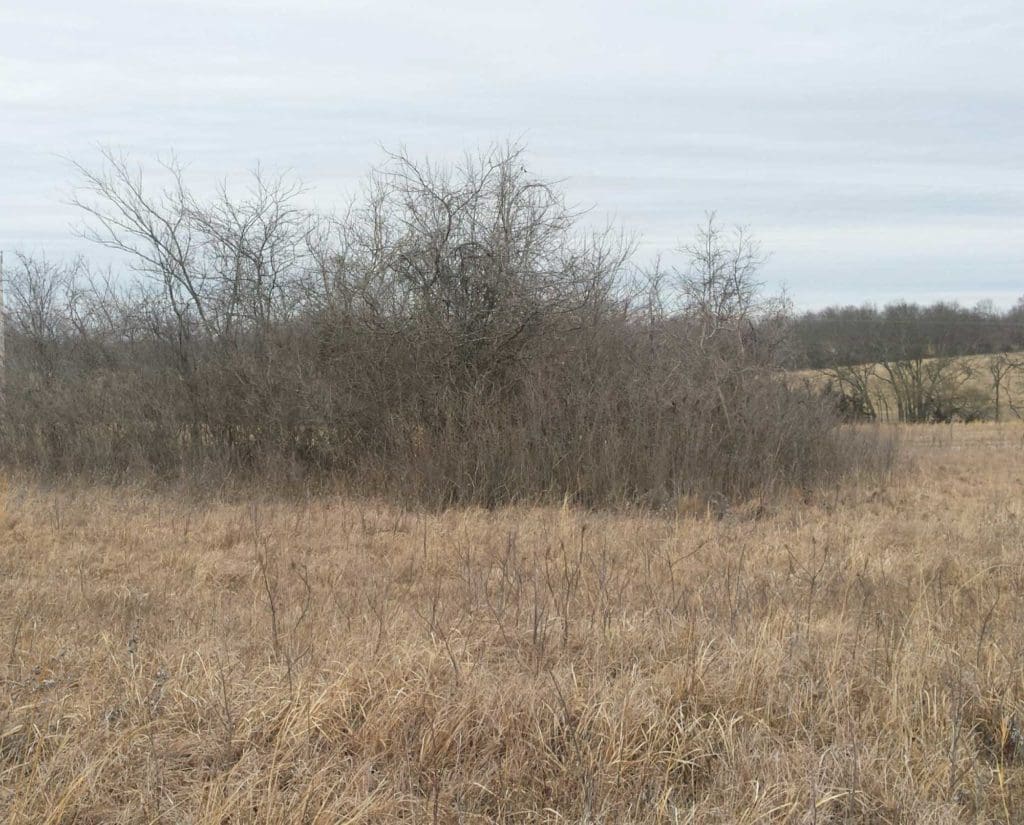Home » Quail Species » Bobwhite Quail Hunting » Identifying Bobwhite Quail Habitat
Identifying Bobwhite Quail Habitat

Raised in the upland bird mecca of Kansas, the passion…
Explore the the three core habitat components of bobwhite quail habitat and how they apply to various regions
Bobwhite quail can be found across nearly one-third of the United States. This area includes Florida up to Ohio, from Texas to Nebraska, and everywhere in between. They live in a myriad of habitat types that contain a wide variety of plants across this large range. However, in its simplest form, their habitat across all the different states is fairly basic. Bobwhite quail require three core habitat components: a diversity of herbaceous plants, bare ground, and woody escape cover. How and why bobwhites use these three components varies throughout the year.
Bobwhites require three core habitat components: a diversity of herbaceous plants, bare ground, and woody escape cover.
Listen to more articles on Apple | Google | Spotify | Audible
Diverse Herbaceous Cover
Diverse herbaceous cover habitat component is the foundation for the production of bobwhites throughout the summer. Bobwhites use herbaceous cover for nesting and brood rearing. They use this same habitat as roosting cover year-round. They require a variety of plant types with broadleaf plants (forbs, also known as wildflowers or weeds) being the most critical. Scattered grass clumps are also necessary in this habitat feature.
The amount of grass required for nesting is typically much lower than hunters realize. Quail only need a clump of grass, preferably some type of native grass, spaced every few yards apart to deposit a clutch of eggs. The remainder of the herbaceous cover is ideally made up of an array of forbs. The forbs are essential for attracting invertebrates, which quail chicks eat exclusively throughout their first several months of life. The higher the diversity of forbs, the higher the diversity of invertebrates, thus giving bobwhites a selection of size and species of bugs to dine upon. Additionally, these forbs create a shady canopy, protecting young chicks from scorching summertime temperatures and potential aerial predators.
As the nesting and brooding season gives way to fall and winter, bobwhites may be found in herbaceous cover that contains a much higher grass component. This is a result of their diet shifting from invertebrates to native seeds and waste grain. However, in areas where waste grain is not available, forbs diversity remains critical because they provide nutritious seeds throughout the winter.
Bare Ground
Bare ground is another feature of bobwhite habitat. It is often overlooked, but it is critical throughout the year, particularly for young broods. When referring to bare ground, don’t think of a plowed field. The bare ground quail need is the interstitial space between plants. If the ground is covered with thatch or dominated by thick grasses, quail cannot move around easily.

Additionally, Bobwhites less than two weeks old cannot regulate their body temperature. It is imperative these chicks can move around without brushing up against dew-soaked vegetation during early morning hours while they forage for insects. When young chicks get wet, they often succumb to hypothermia. Even after chicks are old enough to thermoregulate, they still need to feed on bare ground. Sadly, chicks get left behind as the brood moves across the landscape if thick grass covers the ground, too. Lost chicks have little chance of survival.
During hunting season, bare ground is less critical. However, when given the choice, bobwhites will usually choose cover with bare ground that allows for easy movement. Quail rarely fly as their primary method of moving around during the day. Bobwhites walk to access feeding areas and loafing spots throughout the day. Any experienced quail hunter who hunts in the snow has likely seen a days’ worth of quail tracks leading in and out of all kinds of cover types, sometimes covering hundreds of yards.
Woody Escape Cover
Woody escape cover is the third most critical habitat throughout the year. During the hunting season, bobwhites will rarely be found more than flying distance from some type of woody escape cover. This shrubby cover comes in all forms like wild plum, blackberry, or dogwood thickets being the most preferred. However, quail will use hedgerows, shelterbelts, and other more mature woody cover when shrub cover is unavailable. Bobwhites spend several hours a day during fall and winter loafing in woody escape cover. They use these locations as safety zones to hang out while consuming seeds stored in their crop from morning feeding.

Woody cover provides bobwhites refuge from hot summer temperatures as well as winter’s wrath. It also provides shelter from aerial predators. Ideal escape cover has bare ground underneath, facilitating a rapid exit if any coyotes or bobcats attempt an attack on a loafing covey.
During summer, some stiff, large-canopy herbaceous plants can substitute as woody cover. They can provide much-needed shade and hide the birds from predators. Plants like wild sunflowers or giant ragweed often fulfill bobwhites’ needs. During fall and winter, there is rarely a suitable substitute for woody escape cover. Kochia, a plant found in the western portion of the bobwhite’s range, represents one of the rare exceptions. This is simply due to the fact that even though Kochia is technically an herbaceous plant, it is stout enough to function like a woody plant, remaining upright even through heavy snow and wind. Some cactus species are another example of non-woody escape cover that quail often use.
Combining the Three Core Habitat Components in Hunting Season
Woody escape cover does not guarantee the presence of bobwhite quail, but the lack of woody escape cover usually guarantees their absence.
Woody escape cover does not guarantee the presence of bobwhite quail, but the lack of woody escape cover usually guarantees their absence. Whether hunting scattered mesquite flats in Texas, pine plantations in Georgia, or crop field edges in the midwest, locating suitable woody cover is a must. If you locate a woody draw, shelterbelt, fencerow, or series of thickets, then the next step is identifying what else surrounds the escape cover. There must be enough herbaceous cover adjacent to facilitate roosting throughout the night. “Enough” herbaceous cover can range from hundreds of acres, like some Conservation Reserve Program (CRP) fields, down to just a few feet separating a hedgerow and a crop field. If both escape and herbaceous cover have been located in close proximity to one another, the last piece of the puzzle is a food source. Fortunately, bobwhites consume seeds from hundreds of different plants and trees as well as waste grain from a variety of crop types during the fall and winter.
What Hunters Should Look For
Midwest Bobwhite Quail Hunting Habitat
Midwest hunters often experience CRP or crop fields, and sometimes both. There are millions of acres of CRP across the midwest. Plenty of CRP fields hold bobwhite coveys, often around the perimeter. Anytime a CRP field has the appropriate woody escape cover near the edge and an adjacent crop field exists, there will likely be quail nearby, particularly if the crop field is corn, soybeans, sunflowers, milo, or wheat stubble.
If the CRP field has no crop nearby, but has woody draws or thickets, this scenario gets tougher to predict. There must be enough forb seeds to sustain the covey all winter. To meet this requirement, areas nearby must have been lightly to moderately grazed, contain a weedy wash or draw, or maybe feature an old homestead. Areas that just look “weedy” is a good indicator there is quail food.
Another common example is crop-dominated landscapes. Many states bobwhites call home have a plethora of cropped acres. Food is certainly not the limiting factor in these situations. Often, remnant fencerows full of gnarly hedge trees still exist, providing the necessary woody cover. The wild card in crop country is typically having enough herbaceous cover.
A few feet of cover along a fence row bordering a crop field would facilitate nightly roosting for a covey. Hunters then must consider if the area has enough herbaceous cover to adequately produce quail during the summer months. A tree row splitting a crop field with only a bit of shade-tolerant grass beneath the trees rarely supports a covey year-round. Crop fields with edges planted in one of the many types of federal field border programs and irrigated crop fields that have the corners planted to herbaceous cover typically provide the best chance of holding quail.
Oklahoma and Texas Bobwhite Quail Hunting Habitat
Hunters in Oklahoma and Texas spend most of their time pursuing quail across rangelands. In these arid environments, crop fields rarely exist. The presence of food plants and vegetation of adequate height is critical for success, assuming scattered escape cover exists. Areas that haven’t been overgrazed hold the most promise. Although free-standing water plays a minimal role in most of the bobwhite’s range, it can be very attractive in these dry climates. Windmills, stock ponds (often called tanks), and guzzlers can all attract quail.
Southeast Bobwhite Quail Hunting Habitat
The southeast provides bobwhite quail hunters an entirely different look as compared to most of the bobwhite’s range. Pine plantations managed specifically for quail provide some of the highest quail densities in the country. These areas can be dominated by sandy soils with a wide variety of native grasses and forbs. Some plantations even use native forb plantings as quail food plots. The presence of diverse herbaceous cover and bare ground is typically adequate across the landscape if prescribed fire has been regularly used. Escape cover is usually the deciding factor on where quail will be found. Thickets of plum, blackberry, palmetto or gallberry are good places to look.
Finding Suitable Habitat is Just the First Step
Even if a hunter identifies suitable bobwhite habitat, it must be hunted properly to ensure success. In order to understand how to best approach a piece of habitat, it is imperative to understand the quail’s daily behavior. They do not roost in thickets or woody cover; bobwhites roost in herbaceous cover. In mild weather, this may include wheat stubble or standing crop fields. Quail will break roost after dawn, then head to a nearby area to feed. During cold weather, they often stay on the roost longer in the morning. After feeding, they will seek a safe place to loaf. This is where the woody escape cover comes into play. The covey may move to multiple sites throughout the day, but feeds again mid-afternoon, then heads to a roosting location. Quail do not use the exact same roost each night. They may roost within a general area, but will not sleep in the exact same spot night after night.
READ: Environmental Factors that Drive Bobwhite Quail Chick Survival
Early mornings can be the most difficult time to hunt quail. Hunters who hit the cover at dawn will rarely find success walking brushy fencerows or shelterbelts. This is because quail haven’t yet left their roost or they’re on their way to a feeding area. Additionally, since the birds haven’t moved around yet, there is little scent for dogs to discover. Hunters should focus on likely feeding areas mid-morning and then send their four-legged hunting companions into woody cover throughout the midday period. Spend time hunting food sources again mid-afternoon.
If these hunting strategies are applied in habitats that meet all the previously discussed criteria, quail contacts will most certainly increase. Get out and identify some bobwhite habitat near you.
Raised in the upland bird mecca of Kansas, the passion for upland birds was born at a young age for Kyle Hedges. He has now spent over 25 years managing upland game habitat on public lands in Kansas and Missouri for State Conservation Agencies. He also works as a Habitat Consultant for Land and Legacy, assisting landowners across the country with improving their properties.




“Early mornings can be the most difficult time to hunt quail”
Hence why it is best to have a nice breakfast or chase pheasants until about 10 o clock and save the quail dogs for the afternoon. Nice article 👍
Nice article. I’m in Adams County Mississippi near Natchez. We have a rich loess soil, not the sandier soils typical of the coastal plain province. As a consequence I believe sufficient bare ground is the most difficult habitat requirement to meet in my quail habitat. I burn my pine regularly but still find it difficult to have much bare ground. Any suggestions?